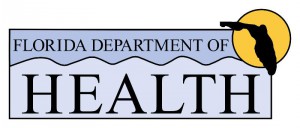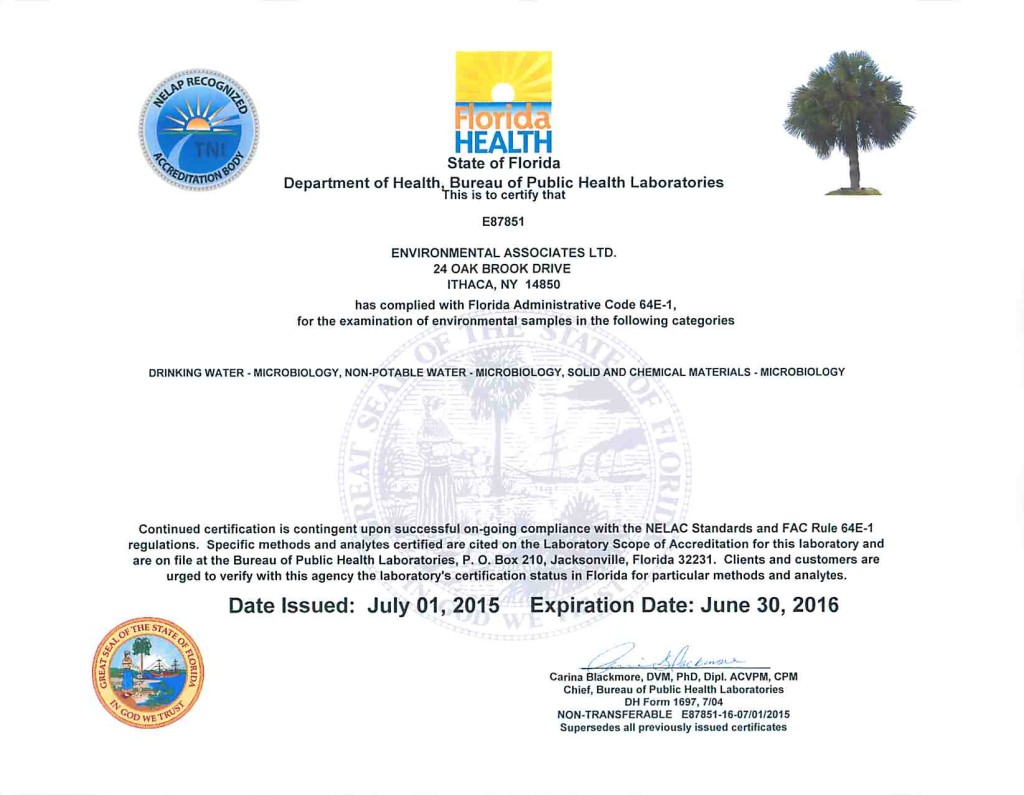Giardia – A protozoan parasite. Occurrence in water sample must be confirmed by identification of two or more morphological
characteristics, nuclei, axoneme and/or median body.
Tag: jury consultant
How are MPA groundwater tests conducted?
Samples are collected in accordance with the EPA “Consensus
Method for Determining Groundwaters Under the Direct Influence
of Surface Water Using Microscopic Particulate Analysis (MPA).”
Two sampling events are recommended, one during a dry period and
a second during a wet period. Turbidity, temperature, rainfall and
stream flow records, and conductivity etc. may be used for guidance
for when to test.
What is MPA and how can it be used to differentiate ground water under surface influence?
What is MPA and how can it be used to differentiate ground
water under surface influence?
The premise behind the use of microscopic particulate analysis
(MPA) is that surface waters are subject to contamination by
pathogens such as Giardia and that there are other organisms whose
natural habitat is limited to surface waters. If these surface water
organisms are found in ground water, then the water is subject to
contamination with Giardia cysts and other pathogens. Indicators of
surface water contamination of ground waters include: Giardia,
coccidia including Cryptosporidium, diatoms and certain other algae,
rotifers, green plant material, and insect parts.
What information is useful in MPA classification?
Historical water quality records
1. At least three years of Total Coliform and/or Fecal Coliform data.
2. Turbidity and temperature records including those of nearby
surface water sources.
3. No history of a known or suspected outbreak of Giardia,
Cryptosporidium or other pathogenic organisms associated with
surface water that has been attributed to the source.
4. No evidence of particulate matter associated with surface water.
On site inspection
1. No evidence for surface water infiltration.
2. Sufficient distances from surface water sources.Cryptosporidium
Cymbella (Diatom)
MPA – What is GWUDI – “a ground water source under direct influence of surface water”?
The EPA Guidance Manual defines a ground water source under
direct influence of surface water as water in which there is either:
“significant occurrence of insects or macroorganisms, algae, organic
debris, or large-diameter pathogens such as Giardia lamblia.”
or
“significant and relatively rapid shifts in water characteristics such
as turbidity, temperature, conductivity, or pH which closely correlate
to climatological or surface water condition.”
Receive an MPA GWUDI Quote by Clicking Here.
Edinburgh, Scotland, UK – Villagers put on water bug alert after torrential rain
RESIDENTS in one of the largest villages on Royal Deeside were yesterday urged to boil their tap water because of the threat of contamination by a stomach bug (cryptosporidium), linked to the recent torrential rain. – news.scotsman.com
Edmonton, Canada – recycles pool water for parks
HazMat Management Magazine
Through the City of Edmonton Water Reuse Program, the seasonal and maintenance closures of swimming pools are coordinated with parks watering operations so .. Click Here
Environmental Associates Ltd.
Environmental Associates Ltd. is a family-owned business, where we believe in making our customer
#1. Here are a few quick points about EAL.
- Over IO.OOO samples analyzed for Cryptosporidium and Giardia since I987
- Dr. Susan Boutros, Founder and President, was one of the first to work with Cryptosporidium in
1987. and Giardia in 1979. - Our team has over 60 collective years experience with Giardia and Cryptosporidium
- Environmental Associates Ltd. is EPA certified for LT2 Analysis.
Environmental Associates Ltd. offers a variety of microbiological laboratory, research and consulting
services, and EAL is NELAP certified.
EPA LT2 Certification
EPA LT2 Certification
January 25. 2006
EPA Lab Code: NY01507
CINCINNATI, OHIO 45268
Office of Ground Water and Drinking Water
Standards and Risk Management Division
Now that the Long Term 2 Enhanced Surface Water Treatment (1.12) Rule has been signed, your laboratory’s status under the Cryptosporidium Laboratory QA Program has changed from “‘pending approval” to “approved.” Only approved laboratories may analyze Cryptosporidium samples for 1.12 monitoring. In order to maintain approval, your laboratory musl continue ils participation in EPA’s Proficiency Testing (PT) program. EPA may also conduct follow-up audits of laboratories to ensure thai they continue to meet the requirements of the fab QA Program. Please nole that all Cryptosporidium analyses conducted during the 1.12 rule monitoring period musl be performed using ihe updated 2005 versions of Method 1622 or Method 1623.
EAL FLDOH NELAP Certifications
EPA Lab Code: NY01507 Florida State Laboratory ID: E87851
Drinking Water
- Cryptosporidium, EPA 1623
- Enteric viruses, EPA/600/R-95/178, s. VIII
- Giardia, EPA 1623
- Microscopic particulate analysis EPA 910/9-92-029
Non-Potable Water
- Cryptosporidium EPA 1623
- Giardia EPA 1623
Biosolids
- Fecal coliforms EPA 1680
- Helminth ova EPA 600/1-87-014
- Enteric viruses, ASTM D4994-89

